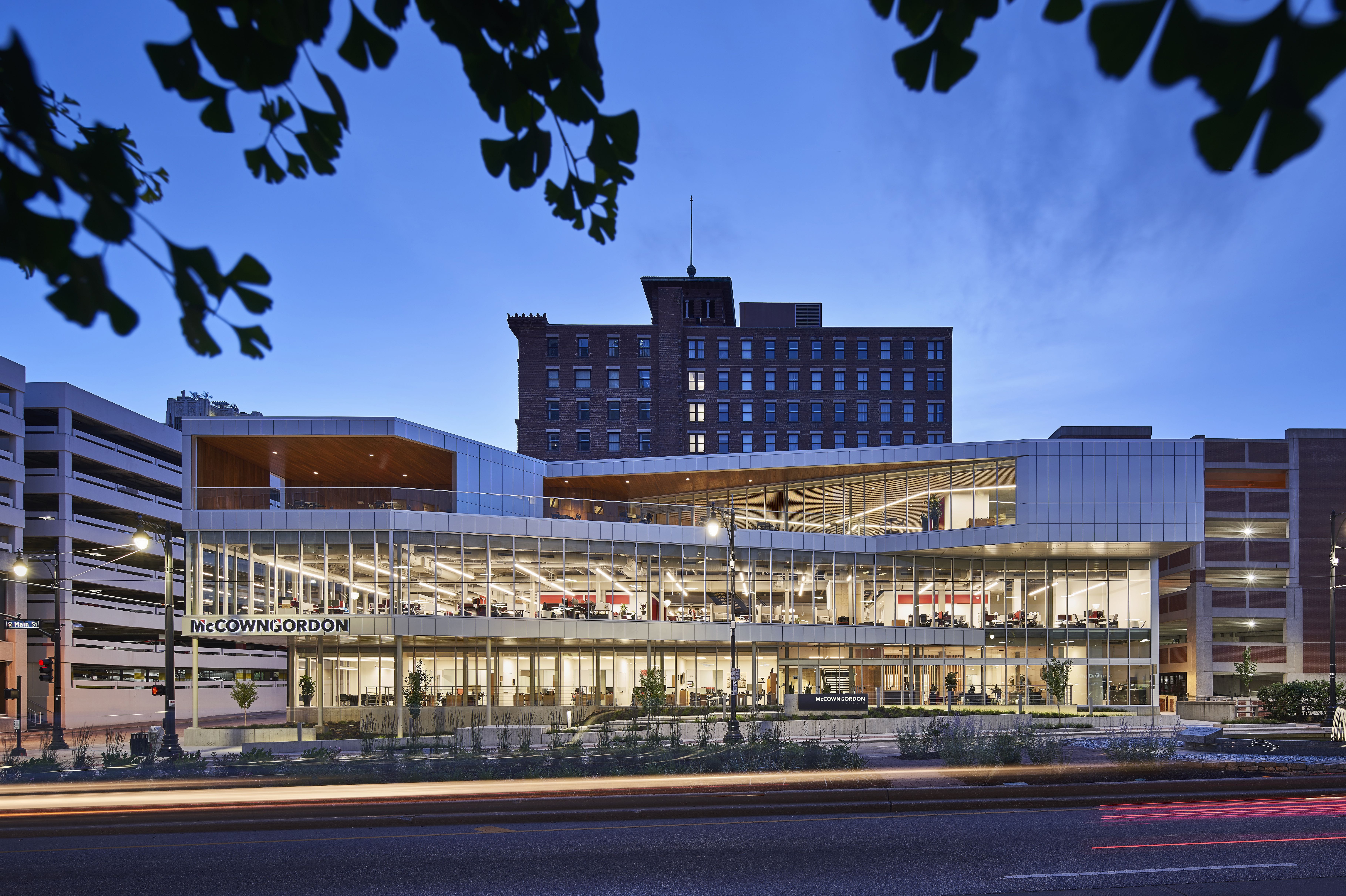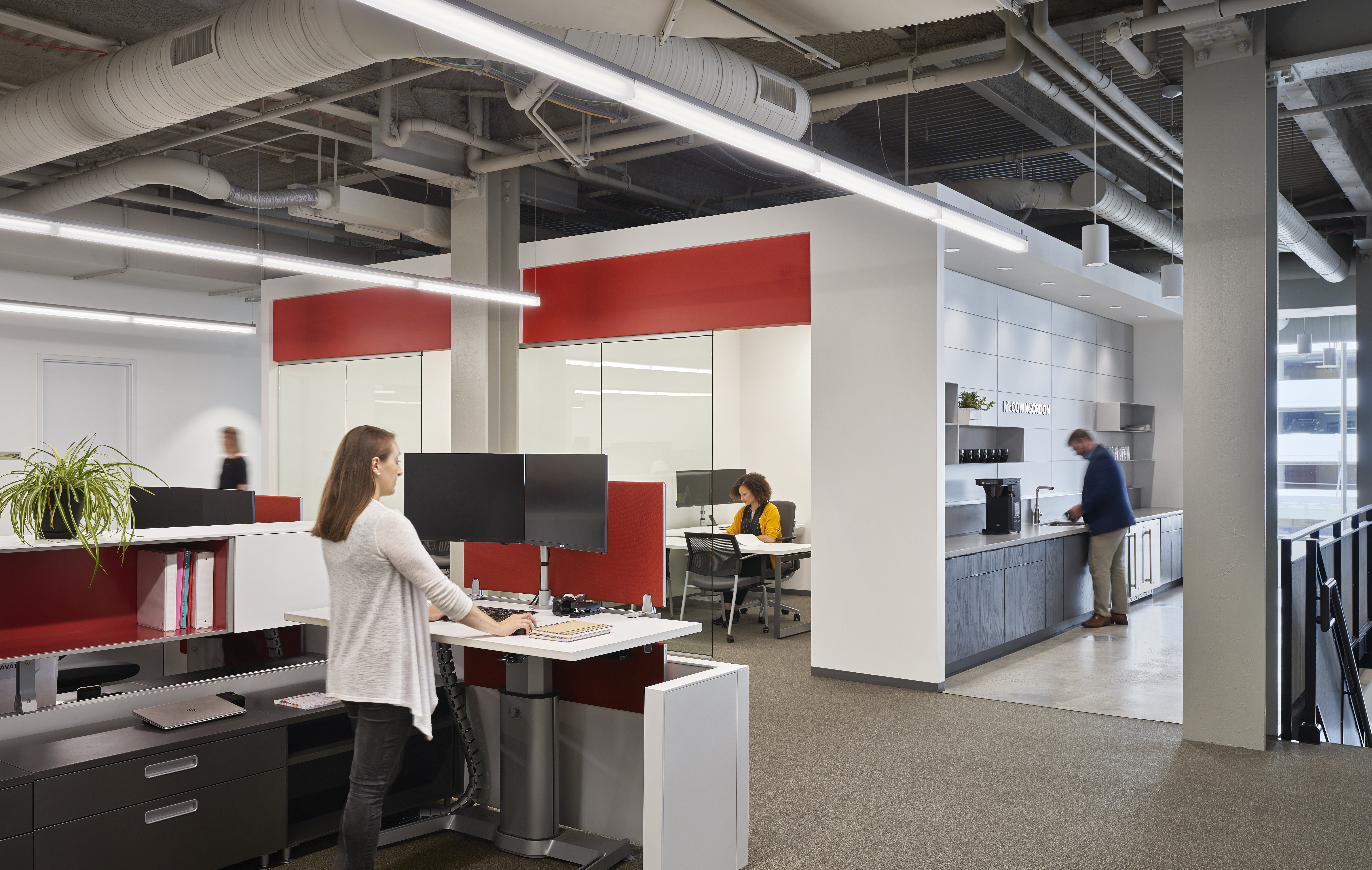Look Book Issue 3 | Be Well 20/20 | Air


McCOWNGORDON: BUILDING AIR QUALITY STANDARDS
Scott Rice reached out to McCownGordon Construction, and inquired about the practices they are implementing, day to day, to promote high levels of air quality in the buildings they construct and for their clients. Emily Tilgner (P.E, QCxP, WELL AP) Director of Engineering Services, shared her team’s approach.
Let’s face it, air quality has not historically been a paramount topic for most building owners and occupants over the past couple of decades. Sure, LEED and WELL building standards garnered air quality some needed attention, but it was often the little sister to its more popular counterparts: building energy efficiency, carbon offsets or even water reuse. While it hasn’t always been in the spotlight, the conversation of air quality in our buildings has been gaining traction in a post Covid-19 world.
Some of the biggest stressors employers and employees alike are facing is the re-opening of offices and how to keep everyone safe. People spend 90% of their time inside1 and inhalation exposure to indoor air pollutants can lead to increase the risk of respiratory diseases2. These items have been weighing heavily on the minds of the McCownGordon leadership team as associates slowly start to return to working in our offices. While the ideas of increased cleaning protocols, varying work configurations and physical separations are all methods to help maintain the social distancing requirements, increasing the air quality has been a major focus area.

McCownGordon Construction targeted five areas to help improve the building air quality: filtration, purification, quantity, circulation and pressurization.
FILTRATION
The outdoor air unit serving our office space utilized MERV 13 filters. Changing to a higher quality filter was not possible due to the static pressure limitations of the existing unit. However, the frequency of filter changes was revisited to ensure that adequate outdoor airflow was making its way into the occupied space and not blocked due to dirty filters.
PURIFICATION
Commercial heating, ventilation and air conditioning (HVAC) systems recirculate up to 80-90% of the air within a space and most filters in commercial spaces do not filter out all pollutants. Ultraviolet (UV) light can rend some viral, bacterial and fungal organisms as inactive making it a cost-effective means for air purification. McCownGordon added an ultraviolet (UV) filter to the office HVAC unit to improve recirculated air quality and lessen the chance of spreading pollutants.
QUANTITY
An ideal situation for any building would be to not recirculate any air within an occupied space. While this is applicable for operating rooms and certain laboratory spaces, it has not historically been required or cost effective for other space types. While most commercial HVAC equipment cannot always provide 100% outside air, most have the capability during times of milder weather using the unit’s economizer mode. McCownGordon’s internal commissioning team examined the parameters for the economizer setting and calibrated the sensors used in order to maximize the amount of fresh air being provided.
CIRCULATION
Even 100% outside air won’t help a space if air isn’t properly being circulated. Proper circulation helps to carry pollutants originated from an occupant or the space to be carried away to be exhausted of filtered out of the airstream. Our commissioning team verified that all supply diffusers and return grilles were free from blockages (furniture, wall coverings, etc.), all dampers were open to the locations verified during the balancing process and air was freely flowing as designed. As simple as this process is, it is often overlooked and ignored especially with systems that can be opened and closed by building occupants.
PRESSURIZATION
The last item the McCownGordon team evaluated was the overall building pressurization. In order to keep new pollutants from entering our building, it must be positively pressurized relative to the outdoors. The pressure was measured at all points of entry into the building and the amounts of intake and exhaust air were evaluated to ensure the building’s pressurization.
While no solution can guarantee that no pollutants will enter or originate within a building space, the team at McCownGordon enhanced the indoor air quality of their headquarters building utilizing their in-house commissioning group in order to help promote a healthier environment for their associates.
1Klepeis N, Nelson W, Ott W, et al. The National Human Activity Pattern Survey (NHAPS): a resource for assessing exposure to environmental pollutants. J Expo Anal Environ Epidemiol. 2001;11(3):231-252. doi:10.1038/sj.jea.7500165.
2McDowell J. Encyclopedia of Human Body Systems. Greenwood; 2011.
We would like to give a special thanks to our friends at McCownGordon for their participation in our Be Well 20/20 Digital Look Book: Air!
Written By:
Emily TIlgner P.E., QCxP, WELL AP
McCownGordon Director of Engineering Services
